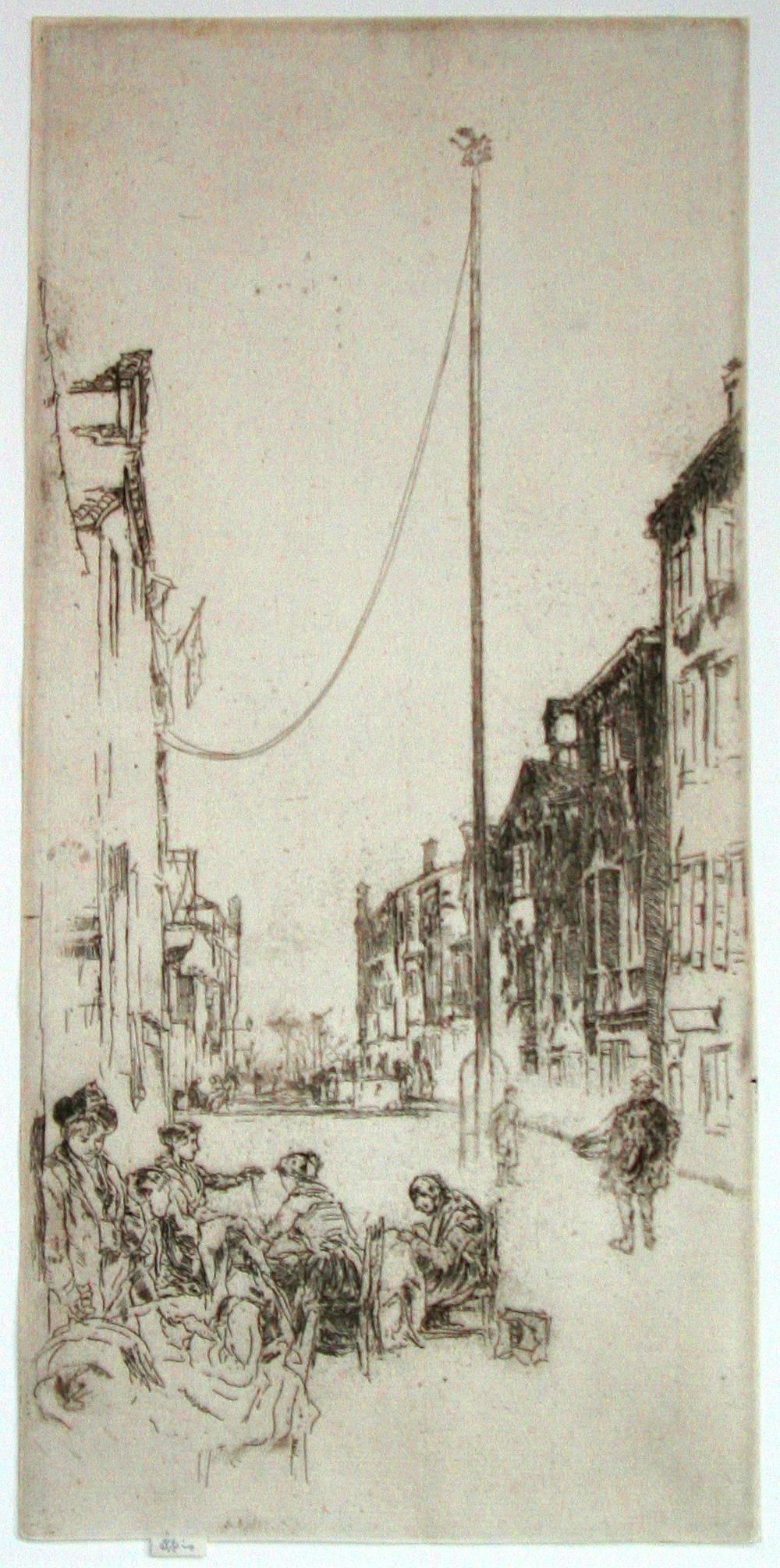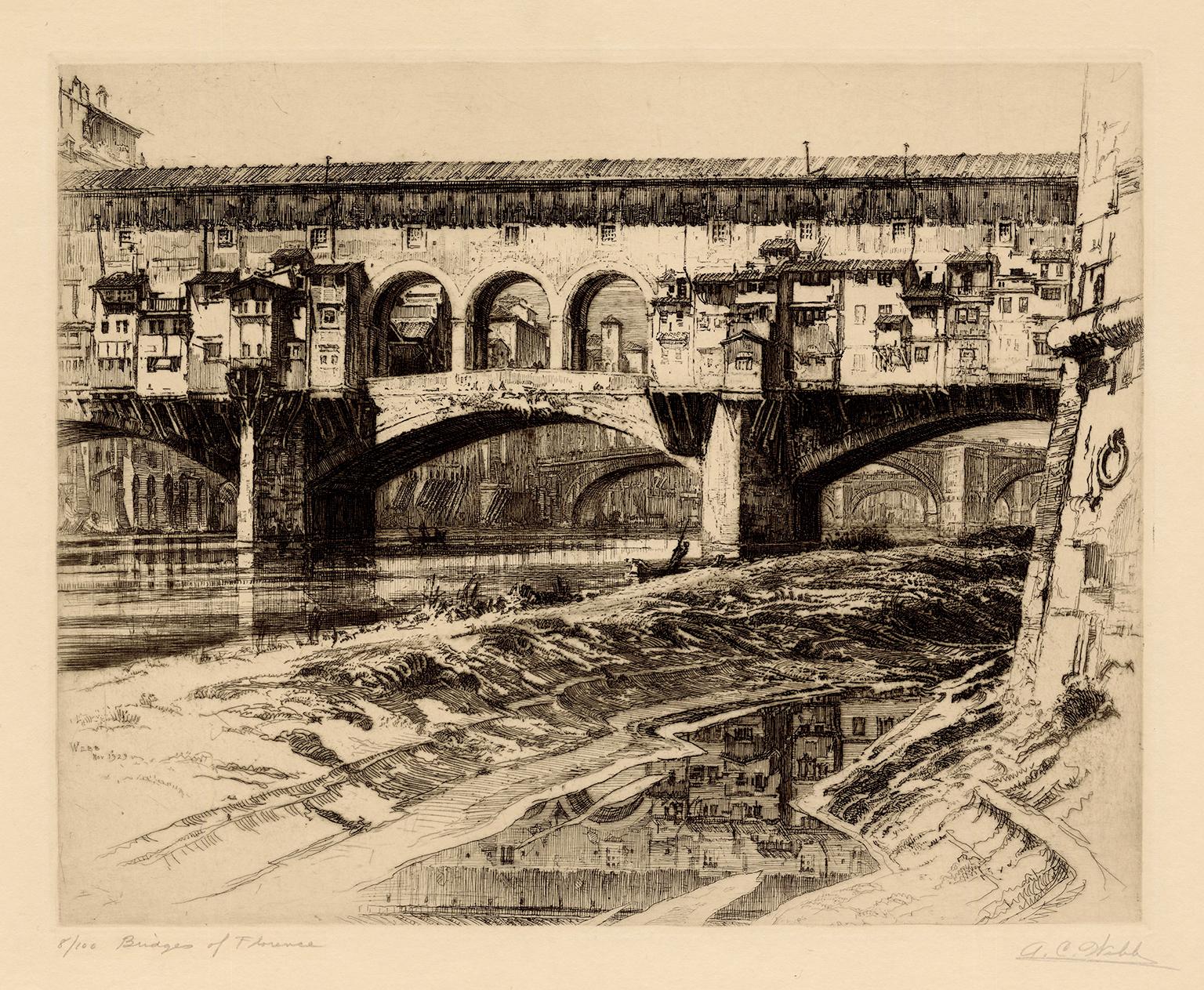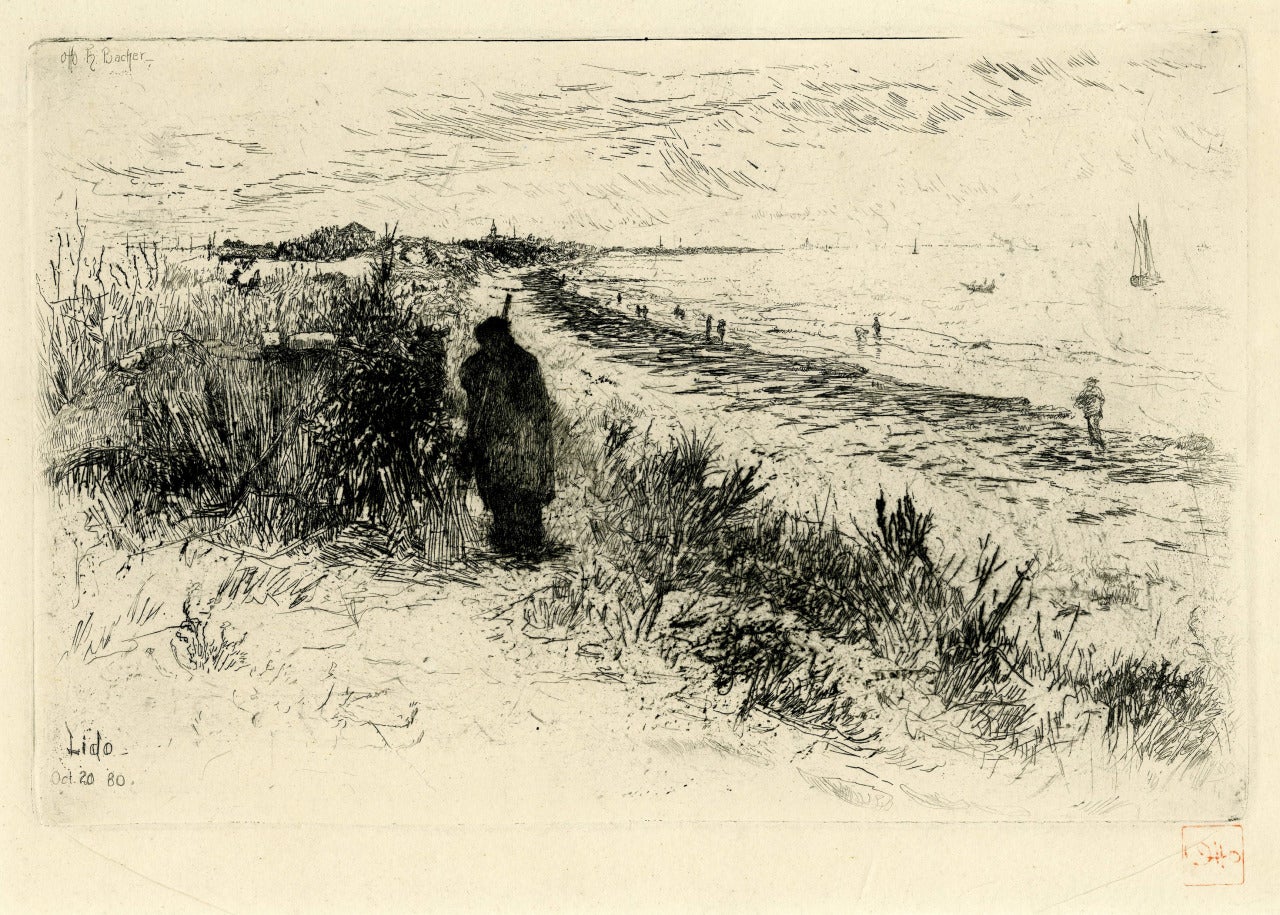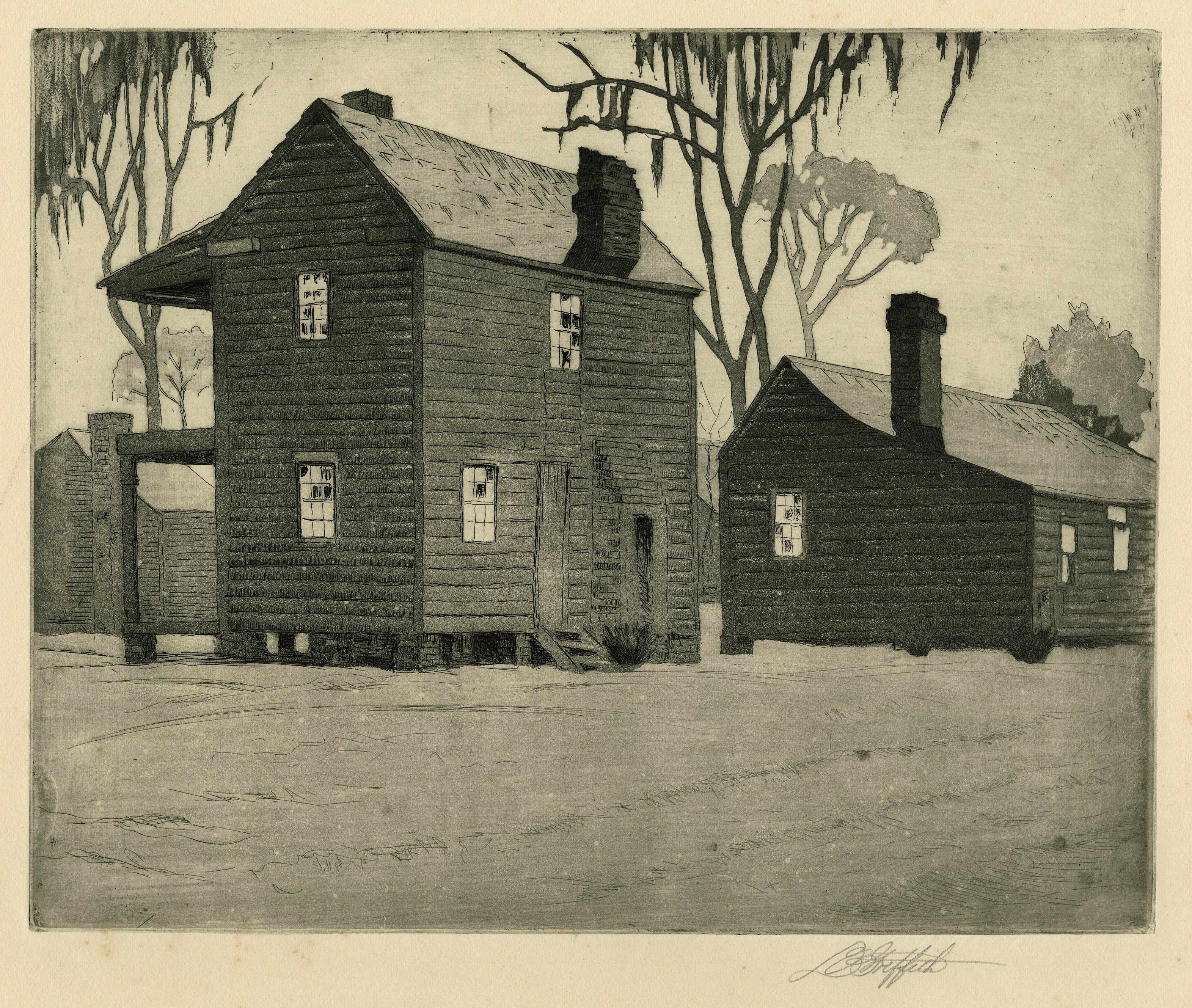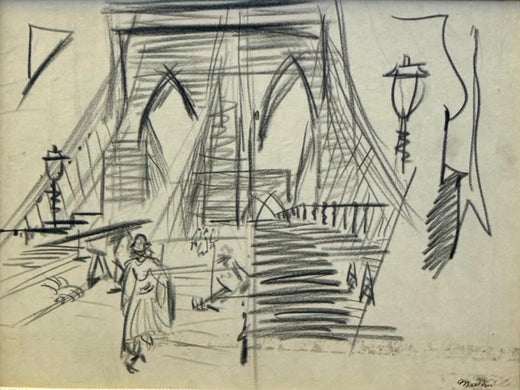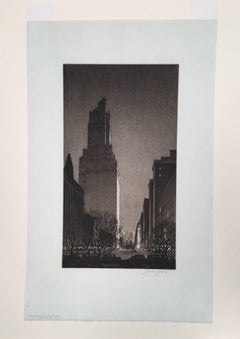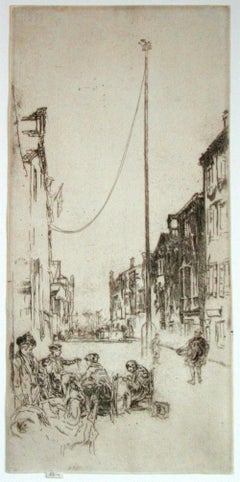Items Similar to St. Germain-Des-Pres, Paris
Want more images or videos?
Request additional images or videos from the seller
1 of 2
John MarinSt. Germain-Des-Pres, Paris1906
1906
About the Item
John Marin (1870-1953), St. Germain-Des-Pres, Paris, etching, 1906. Signed in pencil lower right and titled lower left [also signed and dated in the plate]. Zigrosser 47, only state, from the edition estimated by Zigrosser of about 25. Printed on wove Japan paper, with wide margins, a deckle edge at top, in very good condition (paper loss lower right corner, paper crease lower left margin), 8 x 5 5/8, the sheet 13 x 9 inches.
A fine impression, printed with plate tone.
Marin lived and worked in Europe from late 1905 to 1909, mostly in Paris but also in Venice, Rouen, Amsterdam, London. Although he was familiar with Meryon, his etchings were more impressionistic and “loose”; many see similarities with the etchings of Whistler, and Marin was surely aware of and influenced by Whistler. But, according to Zigrosser, in contrast to Whistler, Marin’s lines were “nervous and passionate and occasionally too roving and restless to be realistically convincing.” One can see hints in Marin’s architectural renderings such as St. Germain-Des-Pres of the beginnings of an evolution toward modernism, which blossomed only a few years later.
- Creator:John Marin (1870-1953, American)
- Creation Year:1906
- Medium:
- Movement & Style:
- Period:
- Condition:Printed on wove Japan paper, with wide margins, a deckle edge at top, in very good condition (paper loss lower right corner, paper crease lower left margin).
- Gallery Location:New York, NY
- Reference Number:1stDibs: LU51531457163
John Marin
John Marin was born in Rutherford, New Jersey in 1870. His father was a public accountant; his mother died nine days after his birth. He was taken to his maternal grandparents with whom he lived in Weehawken, New Jersey. His grandparents, with their son and two daughters were the only parents Marin was to know; it has been suggested that his father seems to have ignored him. As a child of seven or eight Marin began to sketch and when he was a teenager he had completed his earliest watercolors. His education in the schools of New Jersey was interspersed with summers of hunting, fishing and sketching; he traveled in the Catskills, and as far away as Wisconsin and Minnesota. But formal training was almost incidental to his development as an artist. He is to America what Paul Cezanne was to France - an innovator who helped to oppose the influence of the narrative painters, the illustrators who were more interested in subject than form, in surface than substance. Marin brought to his work a combination of values which, at the turn of the century, was unique in this country: an aliveness of touch, colors that have both sparkle and solidity, and forms that are vibrant with an energy characteristic of our age. Marin established himself as a practicing architect. In the early 1890s, he worked for four architects and by 1893 had designed six houses in Union Hill, New Jersey. At the age of twenty-eight, he decided to become a professional artist and studied briefly at the Pennsylvania Academy of Fine Arts in Philadelphia and the Art Students League in New York City. As a watercolorist he had no equal. He used this fluid, spontaneous medium to abstract from objects - skyscrapers, boats, mountains and seas - a simplified anatomy of color and form and to define the pulsation of stresses and movements in the relationship of objects. It was a great disappointment, all his life, that his oil paintings did not achieve the popularity that his watercolors did. From 1905 to 1910 he worked in Europe, where he was influenced by Whistler's watercolors. It was Alfred Stieglitz, Marin's lifetime friend and dealer, whose firm faith in his genius made his position in the art world possible. He developed a distinctive style that he used most characteristically in powerful watercolors of the Maine coast. During the 1920s he provided the dominant force in the movement away from naturalistic representation towards an art of expressive semi-abstraction. He married Marie Jane Hughes after he returned to New York. They had one son, who grew up to run his father's considerable affairs. Marin continued to work at the same steady fast pace as long as he lived. Since 1908 he had produced 1700 paintings, an average of forty a year. He had made the frames for them as well. At the age of seventy-nine, he began to taper off from the days when he painted one hundred watercolors in a summer. He died in 1953.
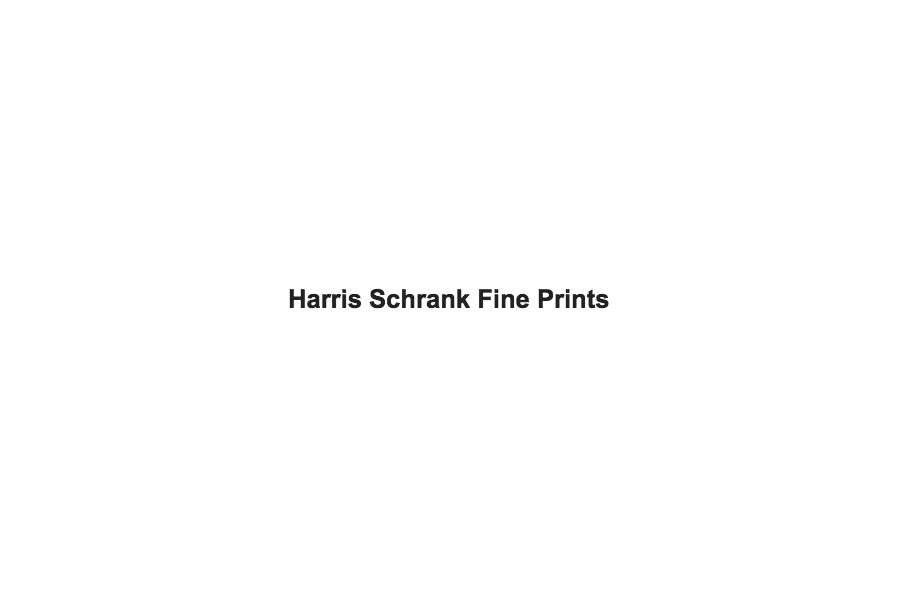
About the Seller
4.9
Recognized Seller
These prestigious sellers are industry leaders and represent the highest echelon for item quality and design.
Established in 2000
1stDibs seller since 2016
103 sales on 1stDibs
Typical response time: <1 hour
Associations
International Fine Print Dealers Association
- ShippingRetrieving quote...Shipping from: New York, NY
- Return Policy
Authenticity Guarantee
In the unlikely event there’s an issue with an item’s authenticity, contact us within 1 year for a full refund. DetailsMoney-Back Guarantee
If your item is not as described, is damaged in transit, or does not arrive, contact us within 7 days for a full refund. Details24-Hour Cancellation
You have a 24-hour grace period in which to reconsider your purchase, with no questions asked.Vetted Professional Sellers
Our world-class sellers must adhere to strict standards for service and quality, maintaining the integrity of our listings.Price-Match Guarantee
If you find that a seller listed the same item for a lower price elsewhere, we’ll match it.Trusted Global Delivery
Our best-in-class carrier network provides specialized shipping options worldwide, including custom delivery.More From This Seller
View AllArmistice Day, 1918
By William Meyerowitz
Located in New York, NY
William Meyerowitz (1898-1981), Armistice Day, 1918, etching with watercolor.
Edition not stated. Signed in pencil. Signed and dated in the plate, lower left.
Image size 9 3/4 ...
Category
1910s American Impressionist Landscape Prints
Materials
Watercolor, Etching
Black Magic
By Gerald Geerlings
Located in New York, NY
Gerald Geerlings (1897-1998), Black Magic, etching and aquatint, 1929, signed in pencil lower right, titled and annotated (New York, 1928) lower left margi...
Category
1920s American Impressionist Landscape Prints
Materials
Etching
Switch Engines, Erie Yards, Jersey City, Stone No. 3
By Reginald Marsh
Located in New York, NY
Reginald Marsh (1898-1954), Switch Engines, Erie Yards, Jersey City, Stone No. 3, lithograph, 1948, signed in pencil lower right. Reference: Sasowsky 30, o...
Category
1940s American Impressionist Landscape Prints
Materials
Lithograph
French Cruiser
By Childe Hassam
Located in New York, NY
Childe Hassam (1859-1935), French Cruiser, lithotint, 1918, signed in pencil with the cipher lower right. Reference: Griffith 8. In very good condition, printed in black ink on cream...
Category
1910s American Impressionist Landscape Prints
Materials
Lithograph
The Little Putney
By James Abbott McNeill Whistler
Located in New York, NY
James Whistler, The Little Putney, 1879, etching and drypoint, signed with the large butterfly lower right (also with the butterfly in the plate). Glasgow 187, third state (of 3). 12...
Category
Late 19th Century Impressionist Landscape Prints
Materials
Drypoint, Etching
Westminster Palace
By Félix Hilaire Buhot
Located in New York, NY
Felix Buhot (1847-1898), Westminster Palace, etching, drypoint, roulette, 1884, signed in pencil and extensively annotated. Bourcard/Goodfriend 155, Bourca...
Category
1880s Impressionist Landscape Prints
Materials
Drypoint, Etching
You May Also Like
The Little Wheelwright's
By James Abbott McNeill Whistler
Located in Storrs, CT
The Little Wheelwright's. 1886. Etching. Kennedy 245; Glasgow 242. 2 1/2 x 3 3/4 (sheet 5 1/8 x 6 1/8). There was no lifetime edition. Glasgow lists only 13 other known impressions. A fine impression printed in black ink on white laid paper. Monogrammed with the butterfly in the plate. Housed in a 10 X 11 1/2 X 1-inch gold leaf period carved Celtic...
Category
Mid-19th Century American Impressionist Figurative Prints
Materials
Etching
The Venetian Mast
By James Abbott McNeill Whistler
Located in Storrs, CT
The Venetian Mast. 1879-80. Etching and drypoint. Kennedy catalog 195 state .vi; Glasgow catalog 219 state x/xii. 13 3/8 x 6 3/8. Glasgow records 53 impressions. A fine, atmospheric...
Category
1870s American Impressionist Landscape Prints
Materials
Drypoint, Etching
Cityscape, Photorealist Signed Etching by Harvey Kidder
By Harvey Kidder
Located in Long Island City, NY
Cityscape
Harvey Kidder, American (1918–2001)
Date: circa 1985
Aquatint Etching, Signed and numbered in Pencil
Edition of 150
Image Size: 19 x 18 inches
Size: 30 x 22 in. (76.2 x 55....
Category
1980s American Impressionist Landscape Prints
Materials
Etching
$720 Sale Price
20% Off
'Bridges of Florence' — Firenze Impressionism
Located in Myrtle Beach, SC
Alonzo C. Webb, 'Bridges of Florence', etching, 1929, edition 100. Signed and titled in pencil. Signed and dated in the plate, lower left. A superb, richly-inked impression, in warm ...
Category
1920s American Impressionist Figurative Prints
Materials
Etching
Lido (Venice)
By Otto Henry Bacher
Located in Fairlawn, OH
Lido (Venice)
Etching on chine collee, 1880
Part of the artist's "Venice Set"
Signed upper right in plate :Otto H Bacher" (see photo)
Signed with the estate stamp, Lugt 2002 recto lower right beneath image. (see photo)
Created October 20, 1880
Reference: Andrew Venice No. 29
Provenance: Estate of the Artist
Otto H. Bacher (1856-1909)
Otto Henry Bacher was born in Cleveland, Ohio, to a family of German descent. He first studied art at the age of sixteen with local genre trompe l'oeil still-life artist, DeScott Evans. Although he studied with Evans for less than one year, Bacher's early work, comprised mainly of still lifes, betrays Evans's influence. After a short period in Philadelphia, where he studied at the Pennsylvania Academy of the Fine Arts, Bacher returned to Cleveland and met Willis Seaver Adams, an artist from Springfield, Massachusetts, who had just recently arrived upon the Cleveland art scene. Soon the two artists were rooming together. Adams was instrumental in the founding of the Cleveland Art Club, as well as the establishment of the Cleveland Academy of the Fine Arts, to the board of which Adams had Bacher appointed. Also during this time, Bacher began to learn the process of etching from local etcher and landscape painter Sion Longley Wenban.
In 1878, Bacher and Adams left for Europe. After stopping briefly in Scotland, Bacher went on to Munich, where he enrolled at the Royal Academy. He quickly tired of the rigors of the academy, and soon he was studying with Cincinnati artist Frank Duveneck, the prime American exponent of the Munich School. In 1879, Bacher made a trip to Florence with Duveneck as one of the celebrated "Duveneck Boys." Early the following year, the group proceeded to Venice, where Bacher and several other artists established studios in the Casa Jankovitz.
By this time an avid printmaker, Bacher had his etching press sent from Muni ch, and it was in his Venice studio that he taught Duveneck the rudiments of etching. Soon Bacher, Duveneck, and other members of the Duveneck circle were experimenting in printmaking. Among the group's contributions were some of the first American examples of monotypes, which they called "Bachertypes" because they were printed using Bacher's press.
It was also in Venice that Bacher met the venerable American expatriate artist, James McNeill Whistler. On learning of Bacher's press and his collection of etchings by Rembrandt, Whistler made himself a regular visitor to Bacher's studio, and he eventually took his own room in the Casa Jankovitz. Bacher spent much of the rest of 1880 with Whistler, the two artists sharing etching techniques. From Whistler, Bacher learned tone and line graduation; from Bacher, Whistler learned his etching techniques, including better ways of using the acid bath which produced less tedious and more efficient work. Bacher visited Whistler occasionally in the years that followed, and in 1908 he published With Whistler in Venice, his famous recollections of his time with the great artist.
Bacher spent the next two years traveling extensively throughout Italy, with Venice as the center of his operations, and he produced a number of important etchings of Italian subjects. Bacher sent several of these works to America in 1881 to be included in the Society of American artists exhibition that year, and had a similar group of works shown at the Royal Society of Painter-Etchers' first exhibition at the Hanover Gallery in London. Following the exhibition, Bacher, along with several other of the American contributors, was elected a Fellow of the Society. Bacher collected twelve of his etchings of Venetian subjects and sold them in bound volumes through his New York dealer, Frederick Keppel.
Bacher returned to Cleveland in January 1883 as a fully cosmopolitan artist. He set up a lavish studio furnished with exotic items and objets-d'art he had collected on his travels, and began to hold art classes as a means to supplement his income. He soon joined with Joseph De Camp in forming a summer sketch class in Richfield, Ohio. Bacher and De Camp also planned the Cleveland Room for a major loan exhibition in Detroit that year. During this period, Bacher increasingly painted in oil, and he began to produce sun-dappled canvases in an impressionistic mode.
Unable to sell any paintings from this early period, however, Bacher left Cleveland for Paris in 1885, where he planned to undertake further studies. Stopping first in London to visit Whistler, Bacher stayed only briefly in Paris before heading to Venice, where he spent the remainder of the year. In January 1886, Bacher returned to Paris and enrolled at the Académie Julian, and also entered the atelier of Emile-Auguste Carolus-Duran. The life of the student seems never to have suited Bacher, as he stayed in Paris only through June, before departing again for Venice. For the next six months he, Robert Blum, and Charles Ulrich...
Category
1880s American Impressionist Prints and Multiples
Materials
Etching
Desolation, S.C. or Deserted Cabins, Beauford, S.C.
By Louis Oscar Griffith
Located in Fairlawn, OH
Desolation, S.C. or Deserted Cabins, Beauford, S.C.
Etching & Aquatint, c. 1930
Signed by the artist in pencil lower right (see photo)
Annotated "Trial Proof" in pencil lower left corner of sheet
Provenance: Estate of the artist
By decent
Note: An impression of this image is in the collection of the Greenville County Museum of Art, Greenville, South Carolina
Condition: Excellent
Plate/Image size: 8 x 9 3/4 inches
Sheet size: 12 7/8 x 15 inches
Louis Oscar Griffith
(1875-1956)
Born in Greencastle, Indiana, Griffith grew up in Dallas, Texas where Texas artist and teacher Charles Franklin Reaugh recognized young “Griff’s” artistic talent. At age 18, Griffith moved to St. Louis where he attended the St. Louis School of Fine Arts.
In 1895, he moved to Chicago where he worked making color prints for the firm Barnes and Crosby. He attended the Art Institute of Chicago and during a brief stay in New York, the National Academy of Design. A successful commercial artist with a studio in the Chicago Loop...
Category
1930s American Impressionist Landscape Prints
Materials
Aquatint
